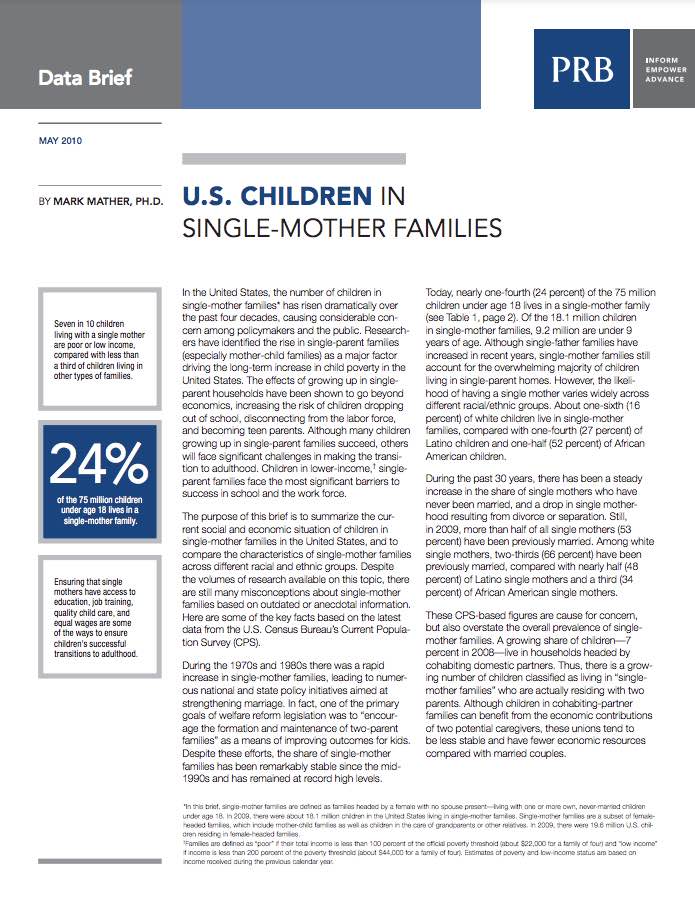
U.S. Children in Single-Mother Families
(May 2010) In the United States, the number of children in single-mother families has risen dramatically over the past four decades, causing considerable concern among policymakers and the public.1 Researchers have identified the rise in single-parent families (especially mother-child families) as a major factor driving the long-term increase in child poverty in the United States. The effects of growing up in single-parent households have been shown to go beyond economics, increasing the risk of children dropping out of school, disconnecting from the labor force, and becoming teen parents. Although many children growing up in single-parent families succeed, others will face significant challenges in making the transition to adulthood. Children in lower-income, single-parent families face the most significant barriers to success in school and the work force.2
The purpose of this data brief is to summarize the current social and economic situation of children in single-mother families in the United States, and to compare the characteristics of single-mother families across different racial and ethnic groups. Despite the volumes of research available on this topic, there are still many misconceptions about single-mother families based on outdated or anecdotal information. This data brief highlights some of the key facts based on the latest data from the U.S. Census Bureau’s Current Population Survey (CPS).
Mark Mather is associate vice president of Domestic Programs at the Population Reference Bureau. Financial support for this data brief was provided by the W.K. Kellogg Foundation.
References
- In this brief, single-mother families are defined as families headed by a female with no spouse present—living with one or more own, never-married children under age 18. In 2009, there were about 18.1 million children in the United States living in single-mother families. Single-mother families are a subset of female-headed families, which include mother-child families as well as children in the care of grandparents or other relatives. In 2009, there were 19.6 million U.S. children residing in female-headed families.
- Families are defined as “poor” if their total income is less than 100 percent of the official poverty threshold (about $22,000 for a family of four) and “low income” if income is less than 200 percent of the poverty threshold (about $44,000 for a family of four). Estimates of poverty and low-income status are based on income received during the previous calendar year.

 ">
">